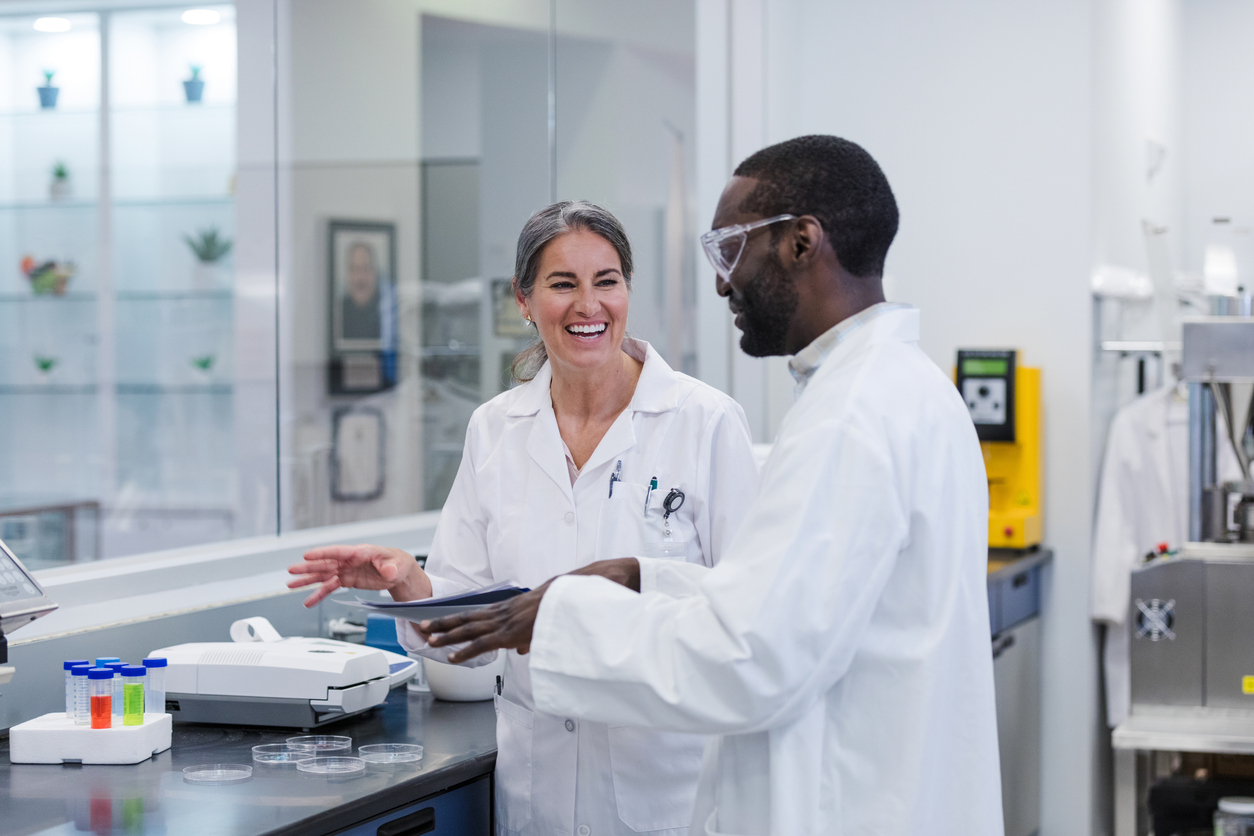This dynamic sector is continually evolving with a range of life sciences industry trends. Our role as a sector intelligence team is to help you keep on top of this. Check out my blog that summarises some of the top trends we’re seeing from our research and analysis.

What are life sciences?
Before we get into the trends, a quick overview of what we mean by life sciences can help us focus in on the relevant trends. Life sciences are a broad church and refer to the study of any living organisms. This could be anything from anatomy to zoology.
For us working in health and social care innovation, the life sciences industry refers to areas like pharmacology, biotechnology, neuroscience, biochemistry and genetics. In a nutshell, its work where its applications can improve health and wellbeing.
Here in Wales, we have a complex yet dynamic life sciences innovation ecosystem. We often use the analogy that it has three pillars: industry, health and social care services, and academia. These three pillars are made up of – and supported by – a complex network of organisations, institutions, groups, and resources.
Our work as a team sees us researching and analysing information pertinent to innovation in life sciences across all of these. Here are some of the trends we’re consistently seeing in Wales.
1. Life sciences in Wales is experiencing a growth surge
The life sciences sector in Wales has shown itself to be on a long-term growth trajectory. The latest figures from the Office for Life Sciences (OLS) show that turnover has been trending upwards since 2014 to reach its highest ever level of £2.85 billion in 2022, up 8.6% from the previous year. Wales continues to have a strong emphasis on MedTech but the Biopharma sector has also shown stronger growth rates than previously.
Another noteworthy aspect that demonstrates the vitality of the life sciences industry in Wales is its continued growth of both life sciences businesses and jobs. In 2022, we saw a 2.9% increase of businesses from the previous year to 319. There was also a 5.5% jump in the number of people employed in life sciences in 2022 to 13,385.
2. Wales is emerging internationally as a model for developing support infrastructure
Wales has been particularly successful in developing science parks that are university-led, thus facilitating the transfer of knowledge between academia and industry.
The emergence of university-led science parks reflects the growing recognition of the significance of location within research and innovation strategies, as demonstrated by the pivotal role being played by M-SParc (Bangor University), AberInnovation (Aberystwyth University), and Cardiff Innovation Campus (Cardiff University).
Wales’ potential to shine even further in this area was underlined in a 2022 evaluation by The Learned Society of Wales, which noted that Wales could leverage its potential for offering a high quality of life and work-life balance as a distinctive advantage, compared to larger science parks in the UK.
3. Life sciences is a huge focus for academia in Wales
Wales is helping to prepare the next generation of life sciences innovators. As well as proportionally being home to a large number of SMEs, universities in Wales have a huge focus on teaching life sciences.
Data we analysed from HESA and Stats Wales showed that over 20% of students enrolled in Welsh universities are studying courses related to life sciences. In line with this, over 30% of staff teaching at Welsh universities are teaching life sciences-related courses. Cardiff, stands out, with nearly 40% of life sciences academics being based at Cardiff University.
As well as preparing the next generation, Welsh universities are also playing a leading role in research and innovation in life sciences. The most recent Research Excellence Framework (REF) results – which evaluate the quality of research in UK higher education institutes (HEIs) – feature Welsh universities in top tier positions for life sciences.
Swansea University is in the top ten (6th) of UK institutions overall for research in ‘Allied Health Professions, Dentistry, Nursing and Pharmacy’, while Cardiff University is in the top ten (10th) overall for ‘Psychology, Psychiatry and Neuroscience’. Both of these universities achieved excellence in their research in these areas, with more than 50% of their research meeting 4* standards (the highest score awarded in the REF). ‘Allied Health Professions, Dentistry, Nursing and Pharmacy’ was a clear area of strength across Wales, with five of the eight Welsh HEIs conducting high-quality research in this area.
Contributing to Swansea’s excellence in research, one of the key resources used for research involving big data is the SAIL databank, a population databank that contains anonymised primary, secondary and social care health and administrative data from across Wales. This has been described as amongst the richest population dataset in the world.
Meanwhile, Cardiff’s strength in neuroscience is showcased by multiple research centres and institutes, including the newly opened Neuroscience and Mental Health Innovation Institute, the Dementia Research Institute, the MRC Centre for Neuropsychiatric Genetics and Genomics, the Cardiff University Brain Research Imaging Centre and the Brain Repair and Intracranial Neurotherapeutics Unit. Just one of the ground-breaking initiatives this expertise has led to is a collaboration with pharmaceutical giant Takeda to identify new approaches to treat schizophrenia and other psychiatric disorders.
4. Wales is thriving as a place for launching new life sciences innovations
Our last example of promise in Wales is not necessarily a new development, but we’ve seen evidence of the strength of Wales as a hub for launching new innovations.
In a 2023 report by Octopus Ventures, Cardiff University was identified as a strong performer when it comes to university spin outs, placing 4th in the UK on their ‘entrepreneurial impact ranking’. The ranking is calculated according to the most crucial indicators that influence spin-out activity at universities: disclosures, patents, spin-outs created, and subsequent financial transactions associated with exits.
Swansea University is also a notable hive of spinout activity. In 2025 it ranked ninth in the UK for the number of spinout companies formed since 2011, and was top in Wales. With 58 companies created, Swansea University alone was responsible for 55% of all the spinouts in Wales.
As this blog illustrates, the life sciences sector in Wales is dynamic and full of high-growth opportunities. Our sector intelligence team can support your organisation through our research and guidance to give you the right information about the life sciences and health and social care innovation landscape. Learn more about how we can support you.

